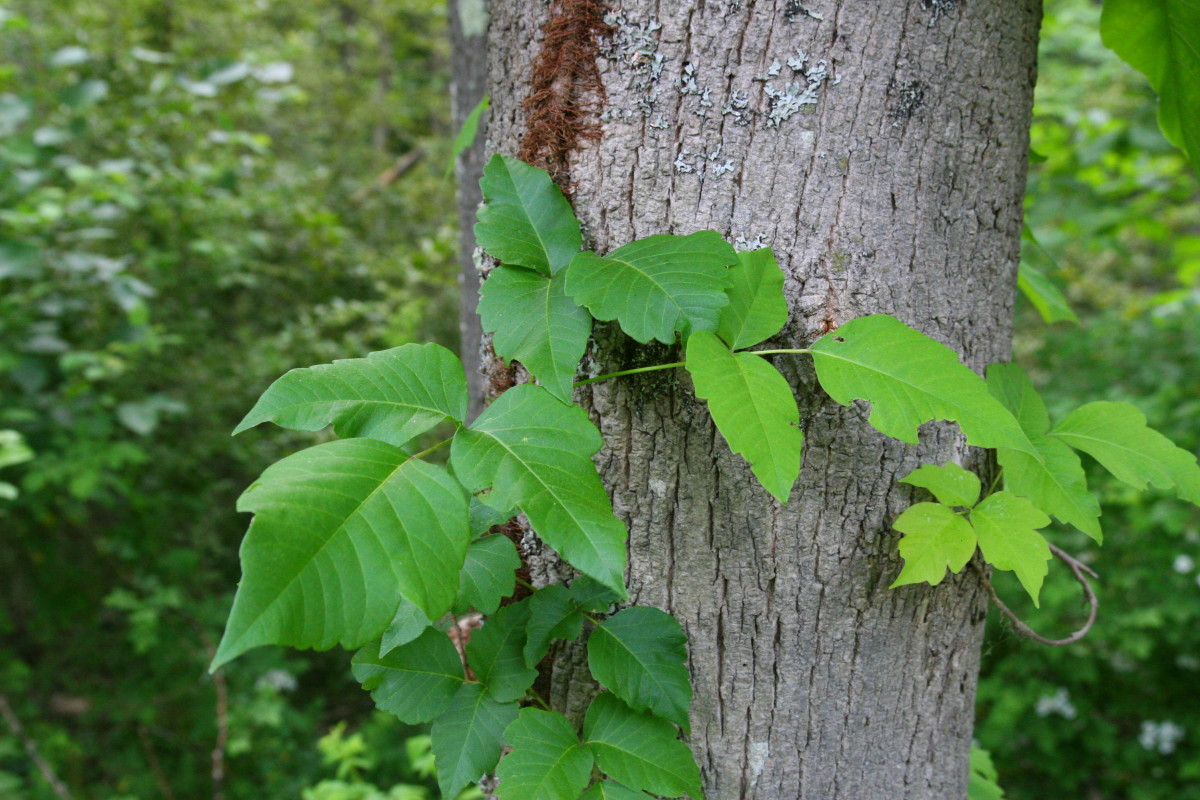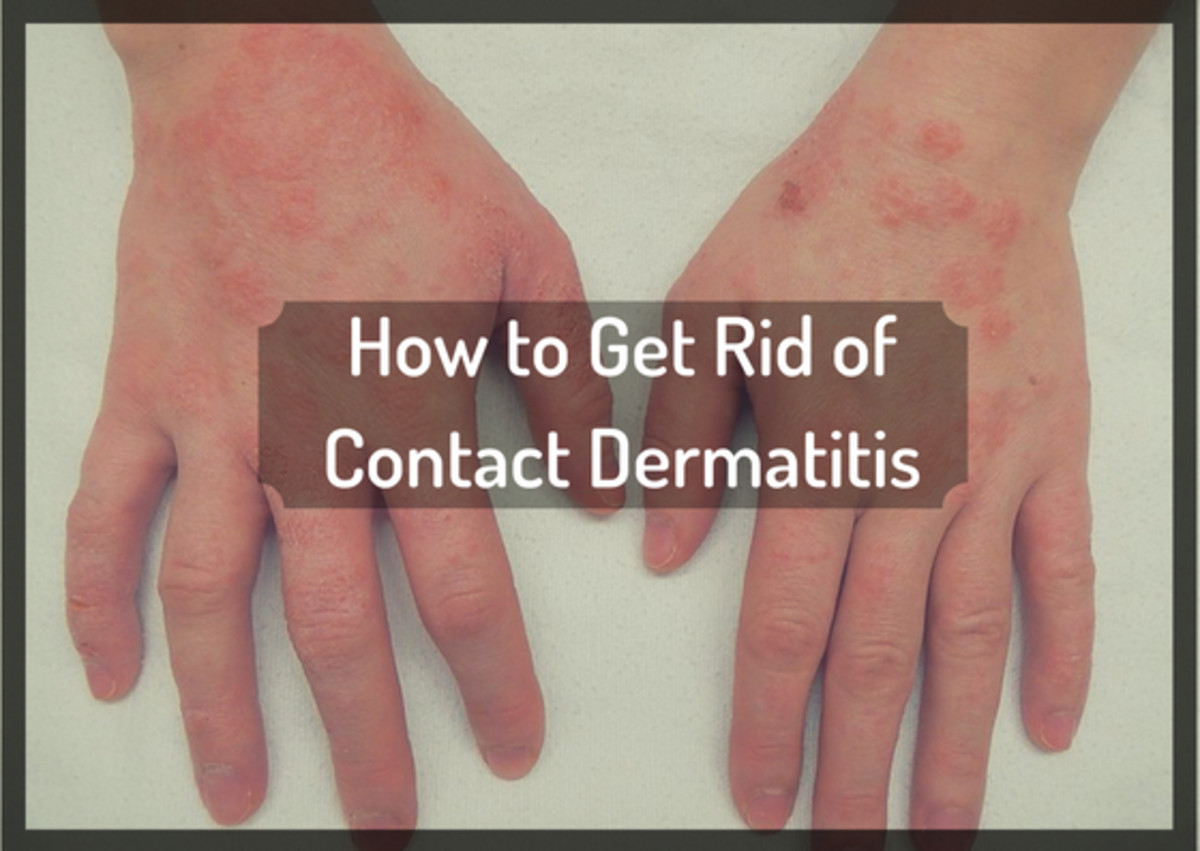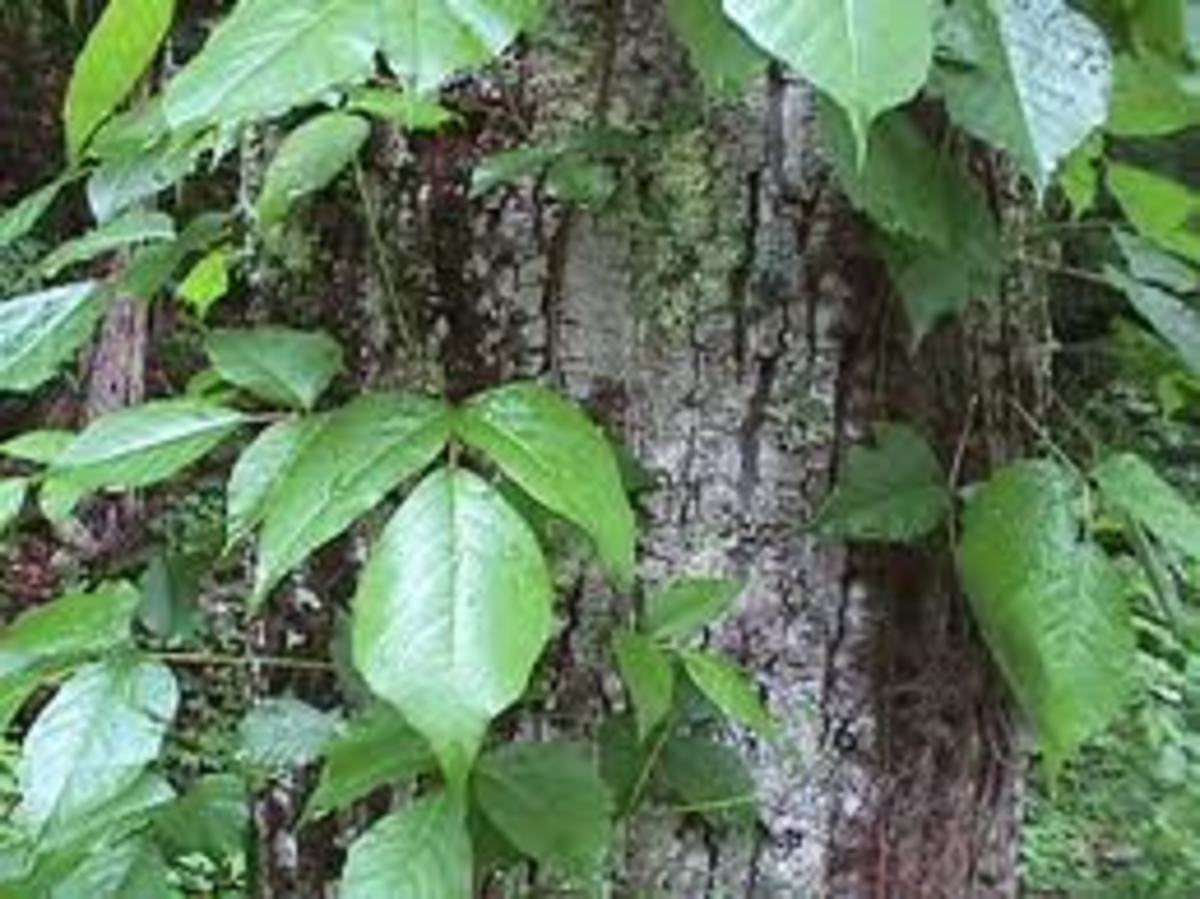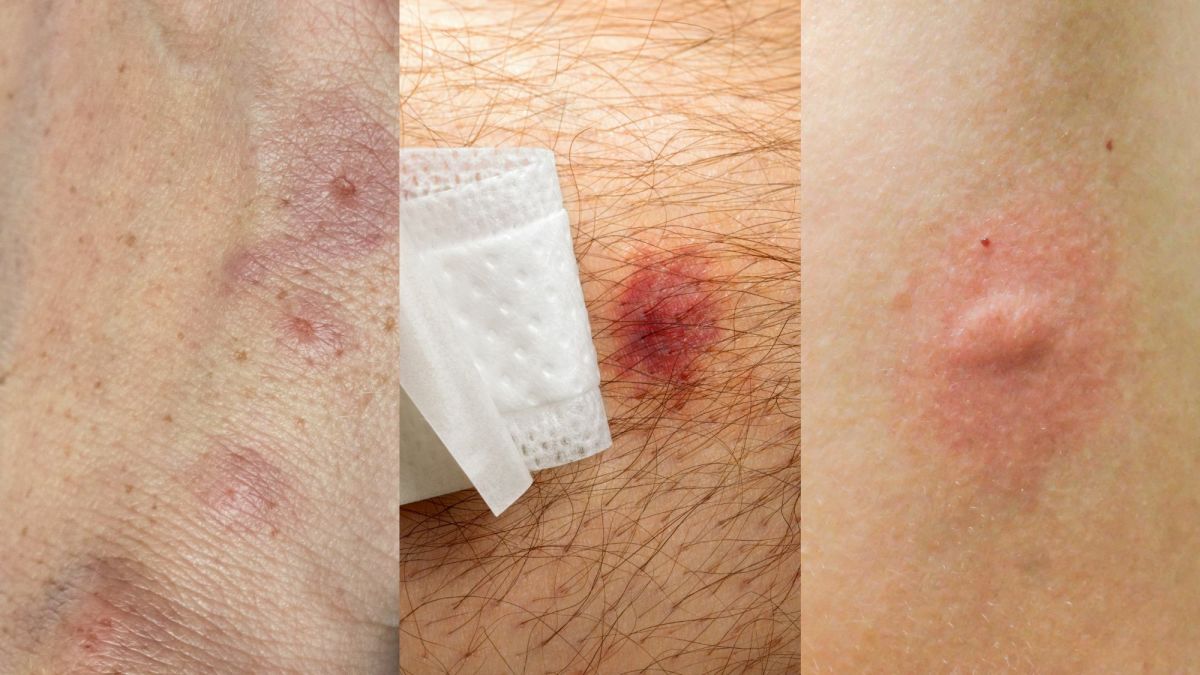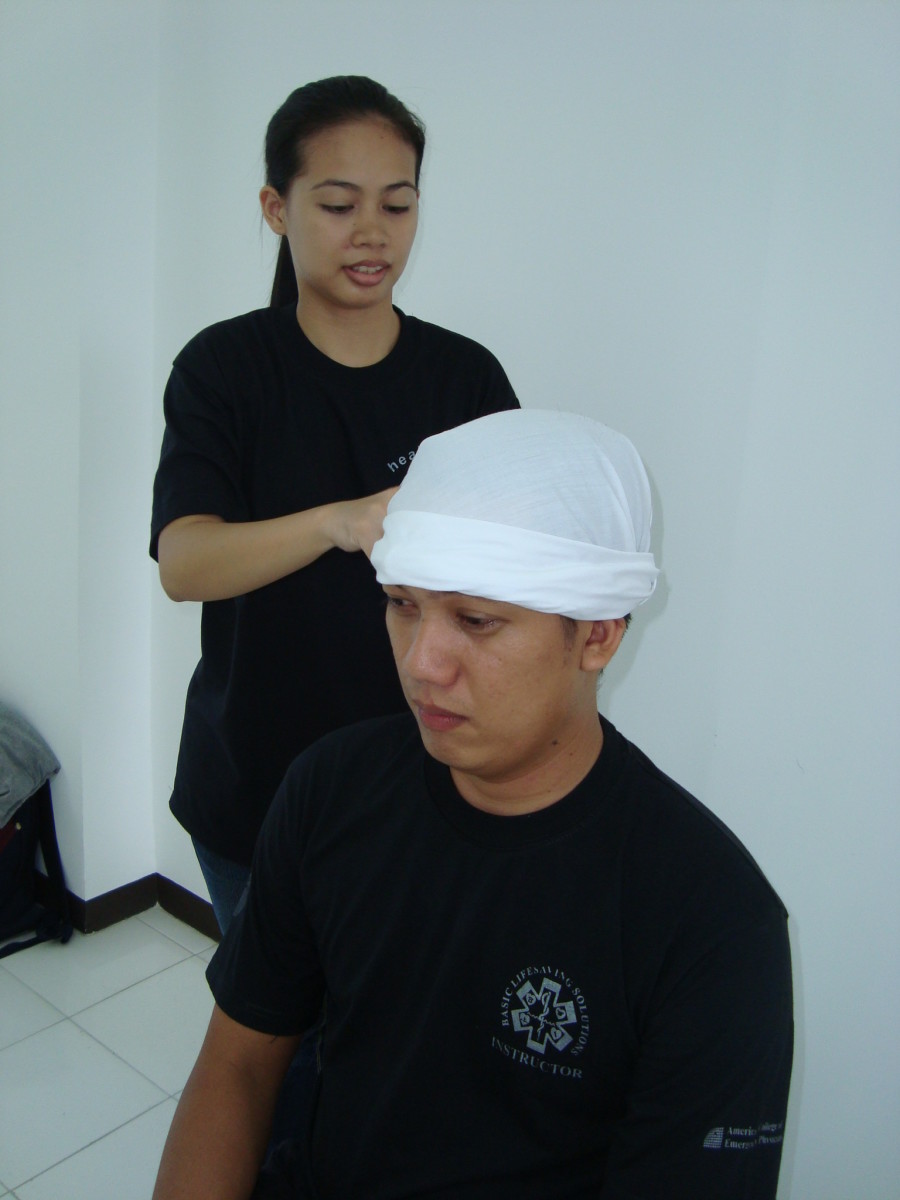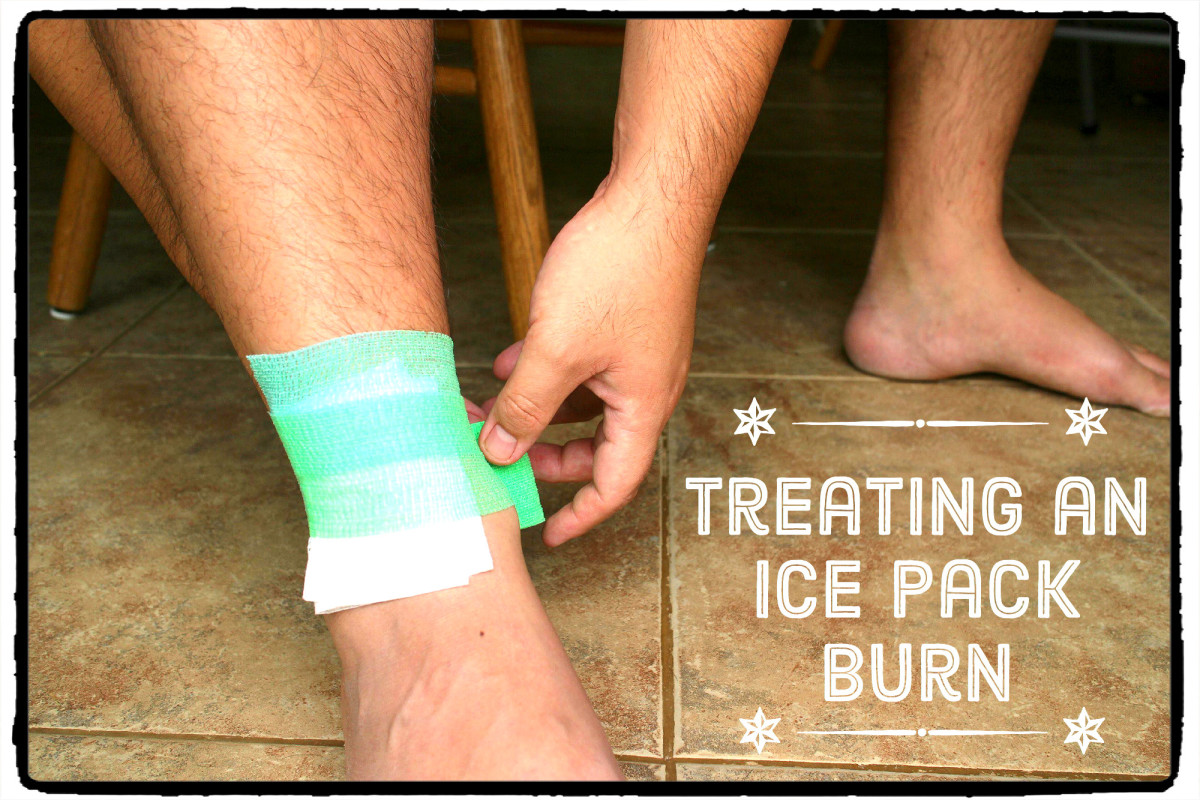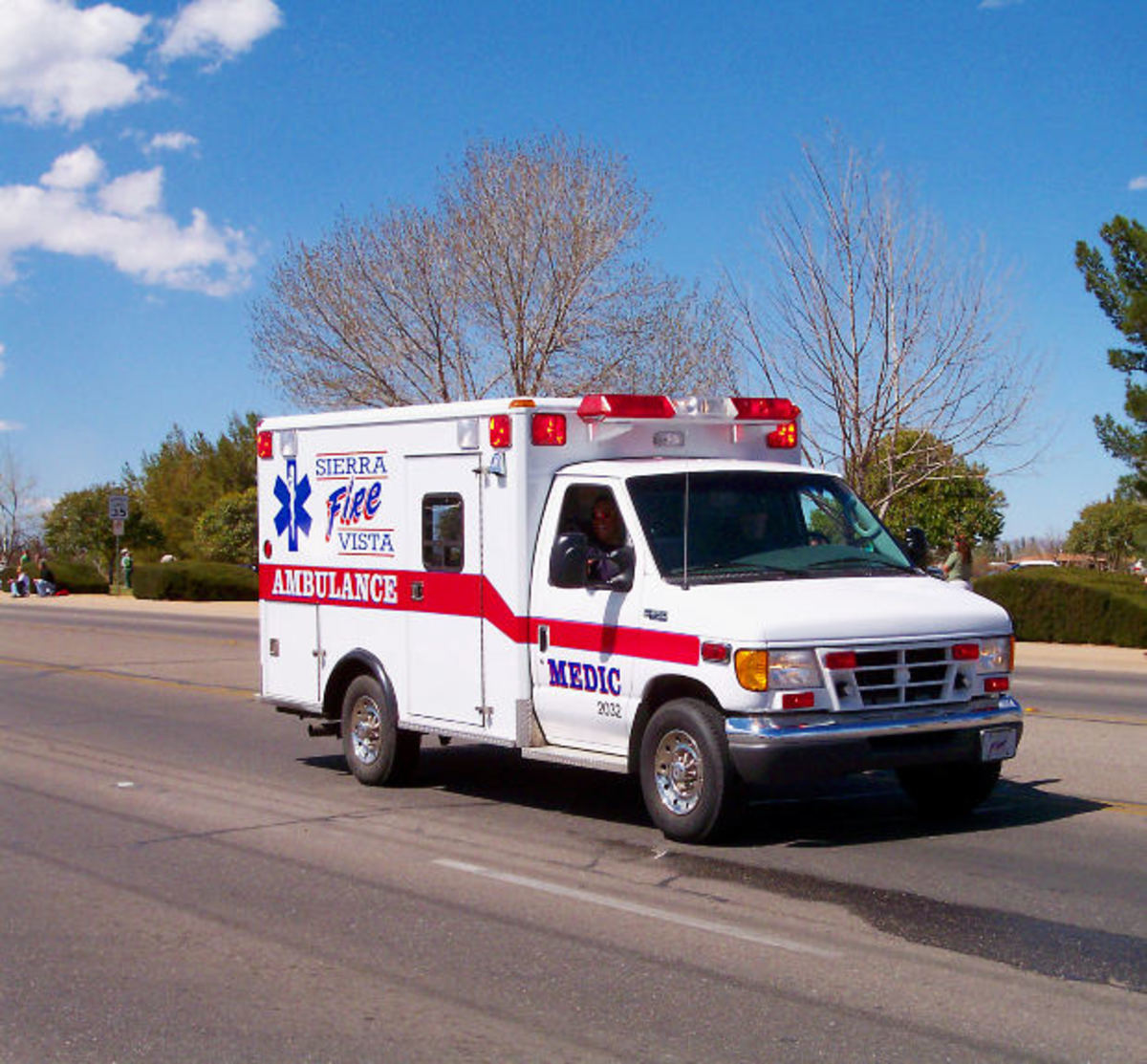Poison Ivy Treatments
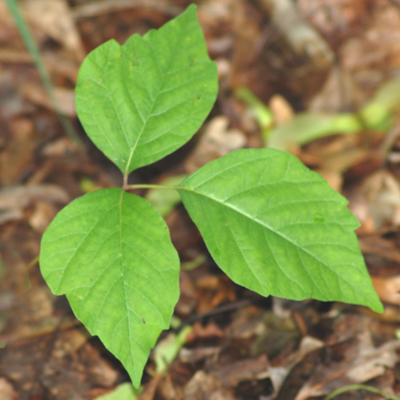
A bout with poison ivy can be a tough thing to endure. The symptoms can be maddening and having grown up in the rural Midwest I have had my share of encounters with the leaves of three. Here you can learn about just what poison ivy really is and easily find many treatment options available around this page to help in alleviating this affliction.
What is Poison Ivy?
The old adage comes to mind when thinking of poison ivy, the one that goes “Leaves of three, let it be.” It carries a description in the warning which refers to the three leaf cluster which identifies the poison ivy plant often found in the eastern wooded areas of Canada and the United States. Also known as toxicodendron radicans and rhus toxicodendron this plant is usually found growing on wooden posts or trees that border wooded areas or even in shadier areas of underbrush. Most people don’t notice this plant, because other than its pattern of three leaves it does not stand out.
Answering the question – What does poison ivy look like?
The old adage I mentioned earlier really is a good and accurate way to identify poison ivy. The leaves of the plant grow in sets of three. Picking it out of a bunch of other green foliage in the forest can be a bit more difficult though. As the picture shows poison ivy leaves tend to be broader at their base and as they narrow towards the tip they become more jagged, though occasionally the leaf is smooth at the edges.
Contact dermatitis is the rash caused by poison ivy.
Though most refer to it as a case of poison ivy, it is really the plant itself. The rash poison ivy causes is called contact dermatitis. The reaction is caused by urushiol oil which is contained in every part of the plant including its leaves. The plant releases this oil when it is disturbed which can then cause the allergic reaction on those it touches. About 70% of people are found to have a reaction to the urushiol oil.
In the 70% of people who are allergic to poison ivy, urushiol (you-roo-shee-all) oil is a very effective irritant. It is extremely sticky comprised of several compounds which water does not easily dissolve. Alcohol however does dissolve urushiol oil making it a better choice for cleansing the exposed area.
A problem with exposure to urushiol oil is there is a delayed reaction to it after contact. This means that people can be exposed to is and not even realize it in order to treat it timely.
How are people exposed to urushiol oil or poison ivy?
Being exposed to urushiol oil and poison ivy is remarkably easy considering how hard it is to realize you were exposed and even more difficult to remove it. Direct contact with a person already exposed or with the plant will do it. Believe it or not, even burning ash from poison ivy plants can cause a skin rash.
Have you ever experienced poison ivy rash?
Symptoms for Poison Ivy
Is poison ivy a disease?
Some might think so. The plant is extremely common across two thirds of eastern Canada and the United States. Often when a person is afflicted with the rash they will say that they have poison ivy. Really they are talking about the rash and symptoms that are associated with contact from the poison ivy plant’s oil. A majority of people are sensitive to the urushiol oil from the poison ivy plant that causes the contact dermatitis. The urushiol oil in poison ivy is the cause of symptoms when it contacts a person’s skin who is sensitive.
Soon after a person makes contact with the poison ivy plant and urushiol oil they will begin to develop a skin rash. This typically will happen within 24 to 48 hours of contact with the plant. The rash is usually what those afflicted will first notice, but in some instanced a person may first notice itchiness (prunitis). Often small red bumps will be present wherever the urusiol oil made contact with the skin. These red bumps (or red lines) will in many cases form in lines across the skin due to scratching and rubbing which will then draw the urusiol oil across the skin.
Poison ivy symptoms
Moderate poison ivy symptoms involve the initial rash progressing to form blisters in the affected areas. The blisters are not the same as the bumps because the blisters are filled with fluid while the bumps are not. The fluid inside the blisters does not contain the urusiol oil which caused the irritation, which means that contact with the fluid inside the blister will not cause new symptoms. To cause a reaction to poison ivy the skin must contact the urusiol oil.
Sever poison ivy symptoms are also a possibility and one is called erythema multiforme. This is a rare reaction but in these cases a severe rash forms. One can easily identify it because it forms a circular red ring which spreads leaving a light colored center.
Additionally a bacterial infection can occur in severe cases and requires treatment with antibiotics. The bacterial infection can gain hold due to the breakdown of the skin by excessive scratching or broken blisters in the area.
Treatment for Poison Ivy
Prevention is the best poison ivy treatment
Leaves of three, let it be is the phrase passed down through generations and is sage advice. However, avoiding all wooded areas east of the Rockies may not be realistic or much fun. Keep aware of your surroundings and going off trail means increasing your risks. Stay away from plants resembling poison ivy and keep your skin covered with long sleeves and pants to help avoid contact with poison ivy and urushiol oil. Pets love to explore the underbrush and they can collect the urushiol oil on their coats and return it to you which will also cause the poison ivy symptoms to appear.
Stop the symptoms of poison ivy before they begin
We know that urushiol oil in the poison ivy plant is what causes the symptoms of poison ivy. To prevent the symptom, remove the cause. As soon as you have been exposed to poison ivy wash the affected areas thoroughly using soap and water. Do not wait long to take this step because you only have 15 minutes after contact or it will no longer help. You must use soap because urushiol oil is sticky and will not break down in water alone without adding the detergents in soap. Urushiol oil will also break down in alcohol so a hand sanitizer or other liquid with an alcohol base will work to clean and dissolve it. Make sure that when you are cleaning the affected area not to irritate or abrade the skin because that could allow the urushiol oil to penetrate deeper.
Treating the poison ivy itch
After the skin reaction and the poison ivy rash (contact dermatitis) as set in, treatments and remedies focus on ways to stop the itch. There are a couple different ways they work.
Topical treatments for the poison ivy itch that are placed upon the skin.
- In nearly all cases a topical treatment for poison ivy will work. Cool compresses can help to alleviate the itch and there are also several over the counter treatments such as calamine lotion, corticosteroids including ashydrocortisone cream and oatmeal bath of Aveeno.
Oral based treatments for poison ivy.
- Oral based treatments are typically antihistamines such as diphenhydramine also known as Benedryl.
There are many useful treatment options on this page.
Doctor treatments for poison ivy
Poison ivy remedies purchased over the counter are often enough to take care of the outbreak. There are occasions which the severity of the symptoms warrant a physicians assistance. Cases which involve the rash spreading to the mouth, genitals, nose or eyes, cases where the skin is excessively damaged due to scratching, excessive swelling in the area or seeping pus which might indicate a bacterial infection.
A doctor has more aggressive treatment options which are stronger and work faster on the contact dermatitis. Physicians can supply an antipruritic lotion or cream to alleviate the itching which often contain corticosteroids such as Triancinolone or Clobetasol which work as an anti-itch agent. Doctors can also provide oral corticosteroids such as prednisone or powerful antihistamines such as Hydroxyzine (Atarax). There are additional treatments which involve using doxepine to aid in blocking the itch. If the case involves a bacterial infection the physician may find it necessary to prescribe antibiotics such as Augmetin or Cephalexin (Keflex). New options come on the market regularly.

